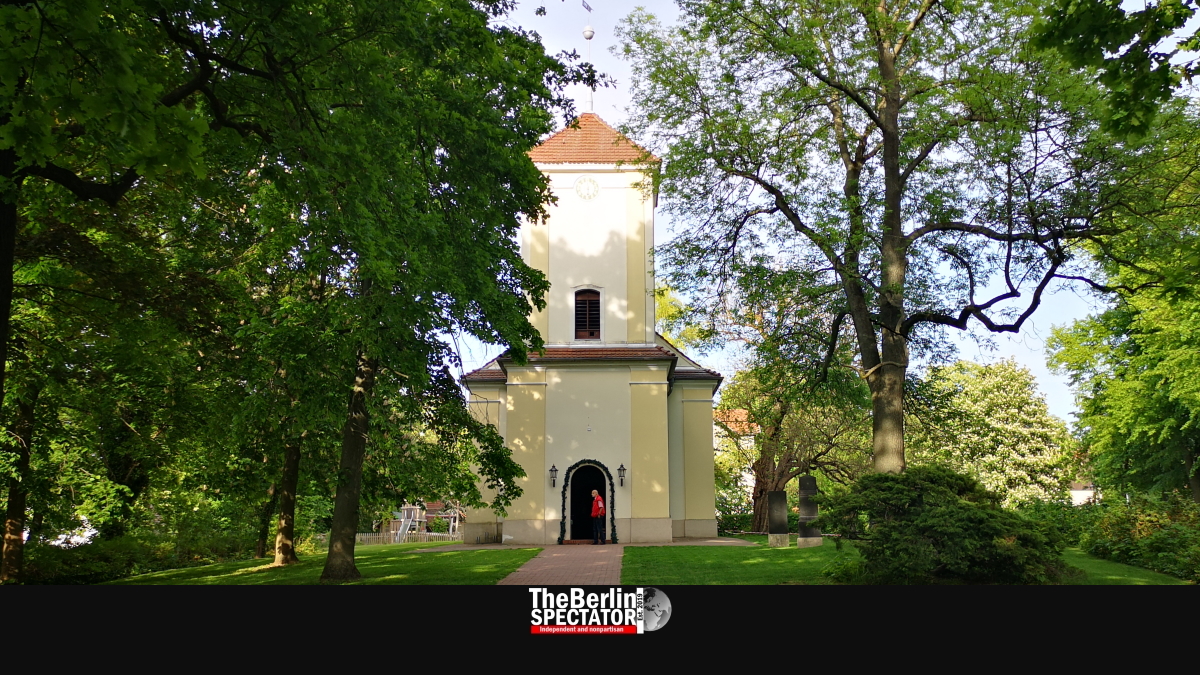Who would have thought that Berlin, a city not exactly known for quietude or deceleration, has an authentic village? Who needs Brandenburg? Berlin has a rural atmosphere itself. In Lübars.
Berlin, June 28th, 2020. Update: July 29th, 2021 (The Berlin Spectator) — Thirteen kilometers (8 miles) north of Berlin’s eastern city center, Lübars is a surprise to those who have not been there. At some point, those typical apartment blocks and office buildings disappear. They make room for a nice countryside one would expect to see in neighboring Brandenburg, including a hill, cornfields and part of an actual 13th century village.

Pheasantry without Pheasants
Located at the foot of Lübar’s hill, the ‘Alte Fasanerie’ (‘Old Pheasantry’) may not have pheasants anymore. They may have been shot, taken hostage, eaten or given way, but the place is still nice for children to run around and play at. In the warm season, there are tables to sit at, lemonade and beer are being offered.

Countless families spend sunny days on the enormous pastures on ‘Lübarser Höhe’, the hill. It provides plenty of room for everyone, for picnics, flying kites, sports activities and other games. Also it has a view. In the distance, huge apartment blocks can be seen. They may be ugly when looked at close by, but from here they almost look beautiful, and they are part of a scenery only one spot in Berlin offers.

The Most Popular Spot
The Lübars Fields are spread all over this part of Berlin which belongs to the Reinickendorf district today. In the year 1247, the village was mentioned in a document for the first time. Back then, 773 years ago, they might have grown the same crops. And Lübars’ cobblestone streets probably looked the way they do today.

But, in 1247, they did not have Angelina’s Ice Cream Parlor, which is definitely Lübars’ most popular place in summer. People usually wait in a long queue to get their vanilla, strawberry or chocolate ice cream.
More Mud than Water
Built in the mid-19th century, the ‘Alter Dorfkrug’ (old village pub) is under monument protection. Its interior is authentic too. In its garden and the former ballroom, guests consume excellent food and good wines, when the place is allowed to open. It depends on the Corona situation. This restaurant, located right in the center of the village, just a few steps from the old church and the historic phone booth, is nice indeed.

From the cobblestone street, a path leads through fields and pastures to Berlin’s last open water source, the ‘Osterquelle’. But the spring for a tiny brook, the ‘Quellgraben’, produces more mud than water. Those who want more water can visit the Ziegelei Lake.

Nice Animals
The main activity in Lübars is riding horses. Several paddocks and horse stables are scattered all over the village. They do have very nice animals up there.

During the Cold War, Lübars was even more of a tourist attraction than it is today. The fact that West Berlin, which was surrounded by the Wall, had a 13th century village with farmers working on fields seemed exotic and somewhat strange. In a way, it still does.
Getting to Lübars is easy by bicycle, car or by bus lines 222 and X21.


